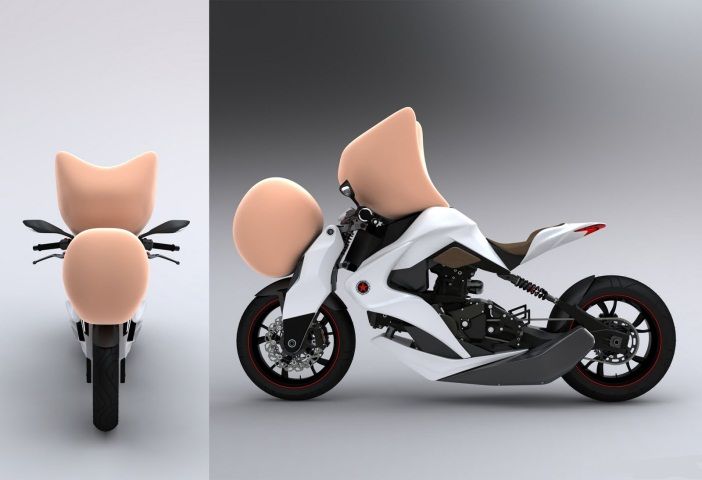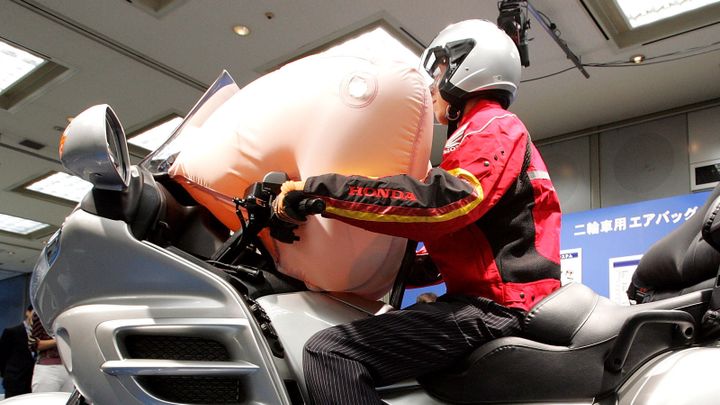


Motorcycle riding is an exhilarating experience, but it also carries inherent risks. While traditional protective gear like helmets and armor can mitigate some injuries, advanced safety solutions like motorcycle airbags are revolutionizing rider safety by providing unparalleled protection during crashes. This cutting-edge technology is designed to absorb and distribute impact forces, significantly reducing the severity of injuries and saving lives on the road. In this comprehensive article, we will explore the importance of rider safety, the mechanics of motorcycle airbag technology, its integration into protective gear, leading manufacturers and products, effectiveness in real-world scenarios, cost considerations, future trends, and best practices for maximizing safety benefits.

Motorcycle riding offers a sense of freedom and adventure, but it also exposes riders to inherent risks of crashes and injuries due to the lack of external protection compared to enclosed vehicles. Traditional protective gear has limitations in providing comprehensive protection, particularly in high-impact scenarios. To address these limitations, advanced safety solutions like motorcycle airbags have emerged as a game-changing technology.
Here are some key reasons why rider safety is crucial:
| Reason | Explanation |
|---|---|
| Vulnerability | Motorcycles offer minimal external protection compared to enclosed vehicles, making riders more vulnerable to injuries in crashes. |
| Impact Forces | High-speed impacts can generate tremendous forces that traditional protective gear may not be able to fully mitigate. |
| Injury Severity | Injuries sustained in motorcycle crashes can be severe, ranging from broken bones to traumatic brain injuries and even fatalities. |
| Medical Costs | The medical expenses and downtime resulting from severe injuries can be financially devastating for riders and their families. |
Motorcycle airbags are inflatable devices designed to provide impact protection for riders during crashes. They deploy rapidly, typically within milliseconds, to create a cushioning barrier that absorbs and distributes the force of the impact, reducing the risk of severe injuries.
There are two main types of airbag systems:
| Type | Description |
|---|---|
| Mechanical (Tethered) | Rely on a tether connected to the motorcycle, deploying when the rider separates from the bike during a crash. |
| Electronic (Sensor-Based) | Utilize advanced sensors and algorithms to detect crash scenarios and deploy autonomously, without the need for a physical tether. |
Mechanical airbags are triggered by the tether connection.
Electronic airbags employ sophisticated sensors and algorithms to detect impact forces, changes in acceleration, and other indicators of a crash scenario, initiating the deployment process accordingly.
Motorcycle airbags are designed to integrate seamlessly into various types of protective gear, ensuring compatibility with different riding styles and motorcycles.
Jackets
Vests
Suits
Current airbag systems primarily focus on upper body protection, including:
Shoulders
Chest
Back
Hips
Future advancements in the technology are expected to include integration into helmets and potentially even the motorcycles themselves, providing additional protection for the head and neck.
Several leading manufacturers have pioneered the development of motorcycle airbag technology, offering a range of products tailored to different riding styles and budgets.
| Manufacturer | Product Line | Key Features |
|---|---|---|
| Alpinestars | Tech-Air Series | Autonomous airbag systems integrated into jackets and suits for comprehensive upper body protection. |
| Dainese | D-Air Technology | Utilizes advanced sensors and algorithms to detect crashes and deploy airbags accordingly. |
| Helite | Airbag Vest Systems | Offers airbag vests for various riding styles and budgets. |
| Honda | Airbag Suit Innovations | Pioneering airbag suit technology for enhanced rider safety. |
The effectiveness of motorcycle airbags in reducing injuries and saving lives is well-documented through:
Studies showing airbags can decrease impact forces by up to 95% compared to traditional protective gear.
Real-world testimonials and case studies of riders who have survived crashes thanks to their airbag systems.
While airbags provide additional protection, they should be used in conjunction with other protective gear like helmets and armor for maximum safety.
The cost of motorcycle airbag systems can be a consideration for riders, with prices ranging from a few hundred dollars for basic models to over a thousand dollars for high-end systems. However, it is essential to consider the potential medical expenses and downtime resulting from severe injuries, which can far outweigh the initial investment in an airbag system.
Despite the proven benefits, the adoption rate of motorcycle airbags among riders is still relatively low due to factors such as cost and awareness. However, as technology advances and prices become more accessible, it is expected that airbag systems will become increasingly mainstream in the motorcycle safety market.
The future of motorcycle airbag technology holds exciting advancements and innovations:

Integration of airbags into helmets, providing additional protection for the head and neck.
Potential integration of airbag systems directly into motorcycles for seamless deployment and comprehensive protection.
Improved sensor technology and deployment algorithms to enhance reliability, accuracy, and reduce false activations.
Increased affordability and mainstream adoption as the technology matures.
To maximize the safety benefits of motorcycle airbags, it is crucial to follow best practices and safety tips:
Proper installation and maintenance of the airbag system to ensure correct functioning during a crash scenario.
Regular inspections to identify potential issues or wear and tear that could compromise performance.
Use airbags in conjunction with other protective gear like helmets and armor, as they are designed to complement, not replace, existing safety measures.
By adhering to these best practices and safety guidelines, riders can optimize the effectiveness of their airbag systems and enhance their overall safety on the road.
Motorcycle airbags represent a revolutionary advancement in rider safety, offering unparalleled protection against the devastating consequences of crashes. As technology continues to evolve and awareness increases, these life-saving systems are poised to become an indispensable part of every rider's safety arsenal, helping to mitigate injuries and save lives on the road.
The two main types are mechanical (tethered) airbag systems that rely on a cable connected to the motorcycle, and electronic (sensor-based) airbag systems that use sensors and algorithms to detect crashes.
Current airbag systems primarily focus on protecting the upper body areas like the shoulders, chest, back, and hips.
Some of the leading manufacturers are Alpinestars, Dainese, Helite, and Honda.
Studies show that airbags can decrease impact forces by up to 95% compared to traditional protective gear, significantly reducing the risk of severe injuries.
Prices can range from a few hundred dollars for basic models to over a thousand dollars for high-end systems, but the potential medical costs of severe injuries can far outweigh the initial investment.
No, airbags should be used in conjunction with other protective gear like helmets and armor for maximum safety.
Future advancements may include integration into helmets and motorcycles, improved sensor technology, and increased affordability and mainstream adoption.
Riders should ensure proper installation, regular maintenance, and use airbags alongside other protective gear while following best practices and safety guidelines.
No, while airbags are used by professionals, they are designed for all riders, from beginners to experienced, to enhance overall safety.
Yes, there are real-world testimonials and case studies of riders who have survived crashes thanks to their airbag systems, demonstrating the life-saving potential of this technology.

Sarah isn't your average gearhead. With a double major in Mechanical Engineering and Automotive Technology, she dived straight into the world of car repair. After 15 years of turning wrenches at dealerships and independent shops, Sarah joined MICDOT to share her expertise and passion for making cars run like new. Her in-depth knowledge and knack for explaining complex issues in simple terms make her a valuable asset to our team.













